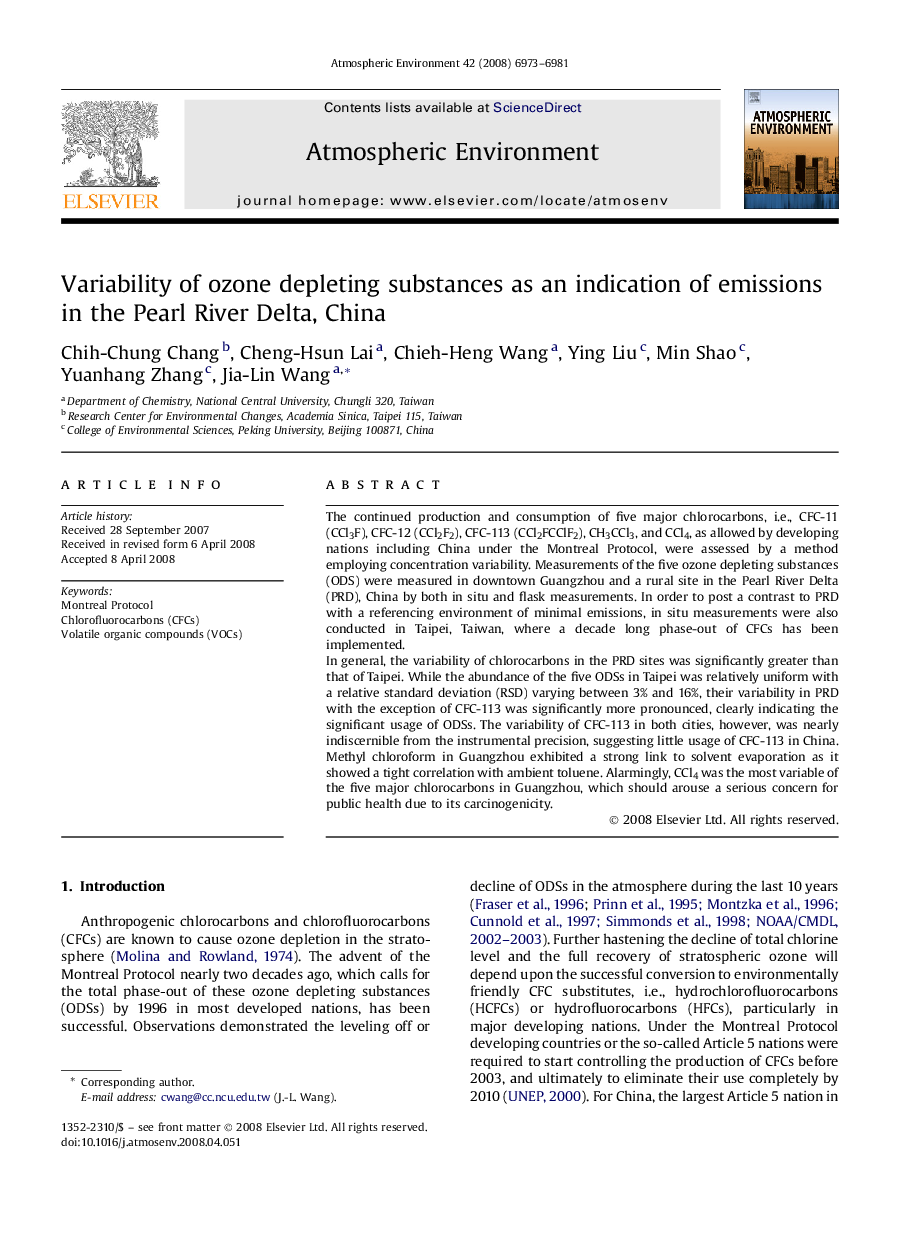| Article ID | Journal | Published Year | Pages | File Type |
|---|---|---|---|---|
| 4442382 | Atmospheric Environment | 2008 | 9 Pages |
The continued production and consumption of five major chlorocarbons, i.e., CFC-11 (CCl3F), CFC-12 (CCl2F2), CFC-113 (CCl2FCClF2), CH3CCl3, and CCl4, as allowed by developing nations including China under the Montreal Protocol, were assessed by a method employing concentration variability. Measurements of the five ozone depleting substances (ODS) were measured in downtown Guangzhou and a rural site in the Pearl River Delta (PRD), China by both in situ and flask measurements. In order to post a contrast to PRD with a referencing environment of minimal emissions, in situ measurements were also conducted in Taipei, Taiwan, where a decade long phase-out of CFCs has been implemented.In general, the variability of chlorocarbons in the PRD sites was significantly greater than that of Taipei. While the abundance of the five ODSs in Taipei was relatively uniform with a relative standard deviation (RSD) varying between 3% and 16%, their variability in PRD with the exception of CFC-113 was significantly more pronounced, clearly indicating the significant usage of ODSs. The variability of CFC-113 in both cities, however, was nearly indiscernible from the instrumental precision, suggesting little usage of CFC-113 in China. Methyl chloroform in Guangzhou exhibited a strong link to solvent evaporation as it showed a tight correlation with ambient toluene. Alarmingly, CCl4 was the most variable of the five major chlorocarbons in Guangzhou, which should arouse a serious concern for public health due to its carcinogenicity.
